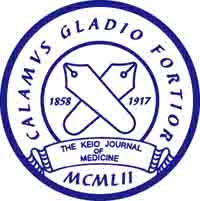<Title:> Clinical Serum Therapy: Benefits, Cautions, and Potential Applications
<Author(s):> Toru Hifumi, Akihiko Yamamoto, Manabu Ato, Kyoko Sawabe, Kazunori Morokuma, Nobuya Morine, Yutaka Kondo, Eiichiro Noda, Atsushi Sakai, Jin Takahashi, Kazuo Umezawa
<Corresponding author E-Mill:> hifumitoru(at)gmail.com
<Abstract:> Blood serum from immunized humans or animals (e.g., horses) contains relevant antibodies and has been used as serum therapy to treat many diseases or envenomation events. The effectiveness of blood serum was initially discovered in 1890 when Kitasato and von Behring observed the effectiveness of this type of therapy against diphtheria and tetanus. Serum therapies played an important role in the advancement of modern medicine prior to the development of penicillin and steroids. At present, several types of serum therapy remain in clinical use. However, some physicians have a limited understanding of the nature and the benefits of serum therapy and the factors that require particular attention. In this review, we set out to clarify the benefits, cautions, and potential applications of serum therapy in the context of conditions such as gas gangrene, diphtheria, botulism, and tetanus and bites from three snake species (mamushi, habu, and yamakagashi) and the redback spider. It is hoped that this review will help clinicians to learn about clinical serum therapies and become familiar with their applications.
<Keywords:> serum therapy, antivenom, critical care, envenomation, passive immunization
<URL:> https://www.jstage.jst.go.jp/article/kjm/advpub/0/advpub_2016-0017-IR/_html


![<i>Yersinia pseudotuberculosis</i> Infection Accompanied by Intussusception and Incomplete Kawasaki Disease in a 7-year-old Girl [Published online Keio J Med, 71, 50-52, by J-STAGE]](http://kjm.pupu.jp/blog/wp-content/uploads/2022/06/2021-0002-CR-100x100.jpg)
![Metabolism in Human Pluripotent Stem Cells and Cardiomyocytes for Regenerative Therapy [Published online in advanced , by J-STAGE]](http://kjm.pupu.jp/blog/wp-content/uploads/2022/01/2021-0015-IR-100x100.jpg)
![Mechanism Underlying Post-menopausal Osteoporosis: HIF1α is Required for Osteoclast Activation by Estrogen Deficiency [Published online Keio J Med, 64, 44-47, by J-STAGE]](http://kjm.pupu.jp/blog/wp-content/uploads/2015/10/kjm_2015-0003-RE1-100x100.jpg)
![A Case of Renal Oncocytoma with Renal Venous Tumor Thrombus [Published online Keio J Med, 68, 39-41, by J-STAGE]](http://kjm.pupu.jp/blog/wp-content/uploads/2019/06/2017-0012-CR-100x100.jpg)
![Organoids: Avatars for Personalized Medicine [Published online Keio J Med, 68, 95-95, by J-STAGE]](http://kjm.pupu.jp/blog/wp-content/uploads/2019/12/68-006-ABST-100x100.jpg)
![Leadership Training of Surgery in US [Published online Keio J Med, 66, 54-54, by J-STAGE]](http://kjm.pupu.jp/blog/wp-content/uploads/2017/09/66-004-ABST-100x100.jpg)
![Differential X Chromosome Inactivation Patterns during the Propagation of Human Induced Pluripotent Stem Cells [Published online in advanced , by J-STAGE]](http://kjm.pupu.jp/blog/wp-content/uploads/2017/01/2016-0015-OA-100x100.jpg)
![Body Motion and Rowing Performance: Association between Hip Angle and Rowing Performance: A Pilot Study [Published online in advanced , by J-STAGE]](http://kjm.pupu.jp/blog/wp-content/uploads/2020/01/2019-0007-OA-100x100.jpg)
![Iron Supplementation Improved Dysphagia Related toPlummer?Vinson Syndrome [Published online Keio J Med, 64, 48-50, by J-STAGE]](http://kjm.pupu.jp/blog/wp-content/uploads/2015/10/kjm_2014-0011-CR-1-100x100.jpg)
![The Cornea: An Ideal Tissue for Regenerative Medicine [Published online Keio J Med, 73, 1-7, by J-STAGE]](http://kjm.pupu.jp/blog/wp-content/uploads/2024/03/2023-0001-IR-100x100.jpg)